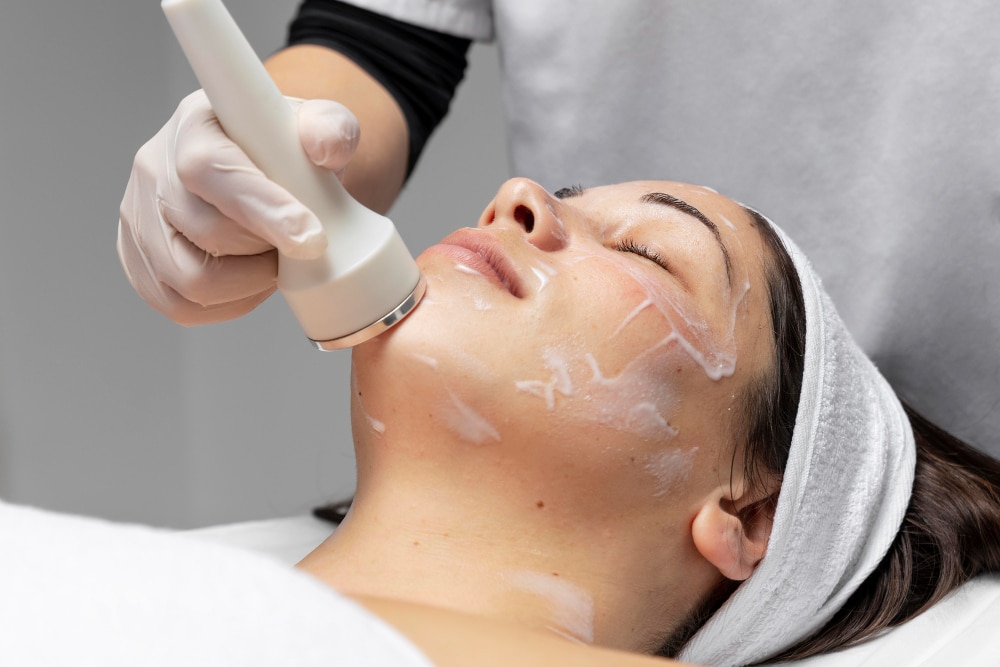
Acne scars can significantly concern patients, particularly when located on the face. Unfortunately, some individuals do not respond adequately to traditional treatments like retinoids, microneedling, peels, or lasers. In such cases, hyaluronic acid fillers may offer a viable solution for treating atrophic scarring.
These treatments aim to rejuvenate pitted or misshapen skin caused by scarring through precise injection of dermal fillers into the dermal/epidermal layer beneath the scar. This approach may involve targeted use of volumizing fillers for individual scars or broader application of less viscous dermal fillers, such as skin boosters primarily used for hydration and skin conditioning. It’s important to note that various types of fillers can effectively treat acne scarring.
Acne scarring arises from nodular and cystic acne, resulting in two main types of scars: atrophic and hypertrophic. Atrophic scars are depressions in the skin categorized as boxcar, icepick, or rolling based on their shape. These scars form due to imbalances in collagen production during the skin’s healing process following inflammation from blocked sebaceous glands.
Treating acne scars with fillers presents both benefits and considerations for patients:
Immediate Results: Fillers instantly improve the appearance of pitted or depressed scars, with continued enhancement over subsequent weeks.
Duration: Depending on the filler used, effects typically last 6-12 months, making it suitable for patients planning events.
Minimal Downtime: Patients can resume normal activities shortly after treatment.
Psychological Impact: Even minor improvements can significantly boost patient confidence and well-being.
Temporary Results: Semi-permanent fillers require repeat treatments as effects diminish over time.
Variable Response: Not all scars respond equally; efficacy depends on scar type, depth, and surrounding tissue condition.
Side Effects: Potential injection site reactions include redness, bruising, and swelling, which should be managed and anticipated.
Pain Management: Some patients tolerate the procedure without anesthesia, although topical anesthesia may affect scar visibility due to local swelling.
Effectiveness: Proper technique enhances scar appearance by filling depressions and stimulating collagen production.
Response varies based on scar type; broad rolling scars typically respond best, while narrow boxcar and ice pick scars can also see improvement.
In conclusion, while filler treatments for acne scars offer immediate aesthetic benefits and psychological relief, their temporary nature and variable response require informed patient expectations and tailored treatment approaches.
Selecting an appropriate filler for acne scar treatment hinges on safety, efficacy, and the practitioner’s expertise. Hyaluronic acid-based fillers like Emervel Classic are recommended for their moldability and lifting power, ideal for direct scar lifting. Skin boosters such as Restylane Vital are preferred for overall skin improvement. Non-hyaluronic acid options like Sculptra and Bellafill offer longer-lasting results but require multiple sessions and may pose irreversible effects.
Treatment focuses on deep, scattered scars. Techniques involve precise injection under each scar, ensuring immediate lifting and minimal visible filler. Methodical approach and photography documentation are crucial for planning and assessing outcomes. Subcision may be necessary for scars with obstructive tissue to prevent filler migration.
Common side effects include temporary swelling, bruising, and occasional nodules due to improper placement. Proper technique and massaging can prevent and manage these issues. Hyaluronidase is used to dissolve persistent filler if needed.
Acne scarring profoundly affects patients psychologically, driving them to seek effective treatments after exhausting other options. Fillers provide noticeable improvements, although managing patient expectations is crucial due to varying scar responses. Thorough consultation, documentation, and informed consent are essential for successful outcomes and patient satisfaction.
Join our newsletter to receive latest news and offers

Medicle MD Ltd
Reg. Number: 14317237
Address: 27 Old Gloucester Street,
WC1N 3AX London,
United Kingdom
Our website is intended solely for people who use medical devices, such as dermal fillers, as professionals. It may contain product advertisements targeted only at such people. To enter Nu Derma Supply, please confirm that you are such a person (e.g. a medical professional, cosmetologist, service technician, etc.).